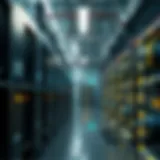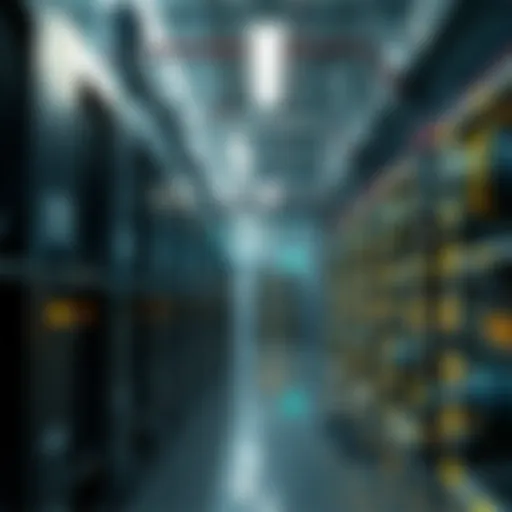Exploring the Art and Science of Drawing NFTs
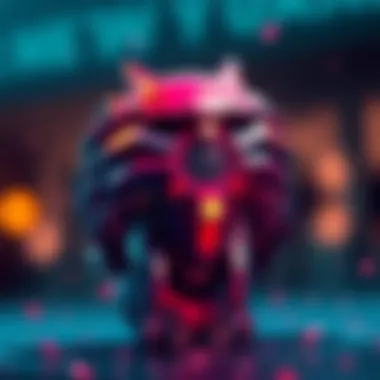

Intro
In the vast expanse of the digital landscape, Non-Fungible Tokens (NFTs) have become a beacon of change for artists and investors alike. The convergence of art and technology has birthed a new frontier where originality meets innovation. As artists step into this realm, understanding the fabric that forms the NFT marketplace is essential.
This article aims to be a compass for navigating this multifaceted world. From the essence of creating digital art to deciphering its valuation in a marketplace that can feel like a wild west, we'll uncover the practical steps artists can take and the intelligent investment strategies traders can employ.
Through case studies and exploration of trends, we'll carve a pathway through the complexities of NFTs, offering insights that appeal to traders, investors, tech enthusiasts, and educators who wish to understand this paradigm shift in the art world.
Trends in Cryptocurrency
Current Market Trends
The landscape of cryptocurrency has evolved dramatically in recent years. With NFTs gaining momentum, the art market is undergoing transformation. Artists are no longer bound by traditional galleries and their often-restrictive practices; the digital realm provides them with a canvas that knows no bounds.
Notably, the sale of high-profile NFTs, such as Beeple's "Everydays: The First 5000 Days," which fetched a staggering $69 million, echoes the changing tides in artistic value. Platforms like OpenSea and Rarible are setting the stage for a decentralized approach to art sales, allowing artists to connect directly with collectors.
Furthermore, multiple artists are now experimenting with generative art, where algorithms create unique pieces. This generates a new wave of creativity and has sparked conversations on ownership and authorship.
Emerging Technologies in Blockchain
Blockchain technology continues to be the backbone of the NFT ecosystem. Smart contracts play a critical role in ensuring authenticity and provenance of digital artwork. In simple terms, it's like having a digital certificate that verifies an art piece's originality. This technological advancement instills confidence among buyers and artists alike.
Additionally, Layer 2 solutions, such as Polygon, are addressing the challenges of high gas fees and transaction speeds on the Ethereum network. These emerging technologies promise a more efficient and cost-effective way for artists to mint their NFTs. They facilitate a smoother experience for creators that was previously hindered by cumbersome processes.
"The essence of NFTs lies not only in ownership but also in the narratives they encapsulate, forever changing how art is perceived and valued."
Investment Strategies
Long-term vs. Short-term Investing
When it comes to NFTs, the approach to investment can vary greatly. Some investors adopt a long-term strategy, seeking to acquire works with enduring value, akin to traditional art collecting. These investments often require thorough research into the artist's background, previous works, and market trends.
On the other hand, short-term investing has gained traction, with speculators looking for quick flips based on trends and hype. The fast-moving nature of social media can ignite sudden interest in particular works, leading to rapid appreciation—or depreciation—of value.
Risk Management Techniques
Navigating the NFT market is fraught with risks. Here are a few techniques worth considering:
- Diversification: Just like with any investment, don't put all your eggs in one basket. Collecting a variety of NFTs can mitigate your overall risk.
- Due Diligence: Always research before investing. Understanding the creator, their previous works, and their reputation can prevent costly missteps.
- Market Sentiment Monitoring: Keep an eye on social media trends and discussions within NFT communities. Platforms like Reddit and Discord can provide valuable insights that may influence pricing and demand.
By implementing these strategies, both artists and investors can navigate the swirling currents of NFTs, maximizing their potential while minimizing the impact of unforeseen shifts in the market.
Prelude to NFTs
The realm of Non-Fungible Tokens, or NFTs, has captured the imagination of artists, traders, and tech enthusiasts alike. As a concept rooted in blockchain technology, NFTs have exploded onto the scene, pushing the boundaries of how we perceive ownership and value in the digital landscape. The significance of NFTs cannot be overstated; they offer a method not only to own unique pieces of digital artwork but also to establish provenance and authenticity, which have traditionally been challenging in the digital space.
This introduction will seek to shed light on why understanding NFTs is critical in today's art market. As we peel back the layers, we aim to unearth key elements such as the definition of NFTs, their historical context, and the surge in digital artistry fuelled by these tokens.
Defining Non-Fungible Tokens
Non-Fungible Tokens are distinct from other forms of digital assets. To visualize this, consider a one-of-a-kind collectible card that has unique traits, like a rare baseball card compared to a dollar bill, which is interchangeable with another of the same kind. NFTs are built to represent ownership of a digital item that cannot be exchanged on a one-to-one basis. This non-fungibility gives rise to the concept of uniqueness, meaning each NFT can hold its distinct value based on its provenance, rarity, and the creator's reputation.
NFTs are minted using blockchain technology, primarily on platforms like Ethereum, where smart contracts play a pivotal role in establishing the ownership and transfer of these tokens. This technological backbone provides a robust security framework, providing assurance that the owner truly possesses the digital item in question.
Historical Context of NFTs
To fully grasp the importance of NFTs, it's helpful to understand their roots. The journey began around the early 2010s, with experiments like Colored Coins, which aimed to represent real-world assets on a blockchain. However, it was in 2017 that NFTs gained notable traction, thanks to platforms like CryptoKitties, which allowed users to collect, breed, and trade digital cats through unique, tokenized assets. This marked a significant turning point, making headlines and capturing the attention of mainstream media.
Since then, the landscape has evolved, with numerous artists and brands embracing NFTs, further propelling their popularity and utility. The growing interest coincided with a larger wave of digital art adoption, where creative expression took the form of pixels and code rather than paint and canvas.
The Rise of Digital Art
In this age of technology, the rise of digital art can often be traced back to advancements in graphic design software, the emergence of social media platforms for sharing work, and the growing acceptance of art existing outside of traditional forms. Artists now produce pieces in digital formats more than ever before, whether it be through drawing tablets, computer-generated imagery, or even 3D modeling. This shift opened doors for art forms previously deemed non-commercial or niche.
NFTs have added another layer to this evolution, offering artists new avenues for monetization. Many creators were struggling to find the right platforms to sell their work, but NFTs provided a solution, ensuring that digital artists could finally receive recognition and financial reward for their creations. With the help of NFT marketplaces, emerging artists can showcase their work without the need for gallery representation, thus democratizing access to the art world.
Understanding the Technology Behind NFTs
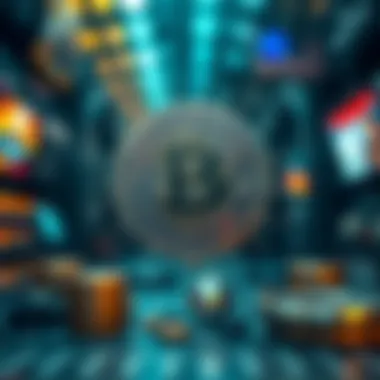

The world of Non-Fungible Tokens, often shortened to NFTs, intertwines art with technology like threads in a tapestry. To truly grasp how digital art transforms into a collectible asset, one must understand the underlying technology driving these tokens. While artists draw from inspiration, the technologists intertwine blocks of data, creating a system that fuels purchasing, selling, and owning unique digital pieces. By deciphering the nuances of blockchain, smart contracts, and the minting process, artists and collectors both stand to benefit significantly. Knowledge in this area not just empowers but also unlocks the full potential of engaging with this new dimension of art.
Blockchain Basics
At its core, blockchain is a public ledger—a digital record of transactions. Each transaction is encapsulated in a block, and once full, that block links to the previous one, forming a chain. This technology delivers transparency and security, essential for trading NFTs. But why is this important?
- Immutability: Once recorded, information cannot be altered without altering all subsequent blocks, safeguarding the integrity of NFT ownership.
- Decentralization: Unlike traditional art markets, no single entity owns the blockchain. This equal footing promotes a broader and more inclusive art community.
- Public Access: Anyone can verify transactions on the blockchain, which ensures that the provenance of each digital artwork remains indisputable.
In short, blockchain technology lays down the foundational bedrock on which NFTs stand, ensuring that every piece is verifiable and unique.
Smart Contracts Explained
Smart contracts are the backbone of NFT transactions. Think of them like vending machines: insert the correct coins (or in this case, cryptocurrency), and you receive your item, all without the intervention of a middleman. They utilize self-executing code that automatically enforces the terms of the agreement upon certain conditions being met.
Consider these advantages of smart contracts in the context of NFTs:
- Automation: Once set, smart contracts eliminate the need for manual oversight, streamlining the entire buying and selling process.
- Royalty Payments: These contracts can be programmed to provide artists with ongoing royalties with each resale of their work, making sure they continue to benefit from the appreciation of their art.
- Custom Conditions: Artists can set specific conditions for use or sale, allowing for more control over their creations.
In the rapidly evolving NFT landscape, smart contracts promote fair practices and protect artists while making transactions user-friendly and efficient.
Minting Process of NFTs
The minting process refers to converting digital files into NFTs on the blockchain. It’s akin to creating the first copy of a print. During minting, various characteristics of each digital file are stored as metadata, ensuring that the uniqueness of the art is recognized and preserved.
Here’s a simplified breakdown of this process:
- Choose a Blockchain: Artists typically select a blockchain like Ethereum or Tezos due to their robust NFT support.
- Select an NFT Marketplace: Platforms like OpenSea or Rarible serve as the conduits through which NFTs can be minted and sold.
- Create Your Wallet: You’ll need a digital wallet to hold your NFT and any cryptocurrency needed for transactions.
- Upload Your Artwork: This includes your digital drawing, video, or audio file.
- Fill Metadata: Information regarding the artwork—title, description, attributes—will be entered here.
- Set a Price and Mint: Finally, you decide on a price and complete the transaction to mint your NFT.
This can seem daunting, yet it opens doors to creativity and innovation, making art more accessible to a global marketplace.
By embracing the technology behind NFTs, artists not only gain security and control over their art but also new avenues for expression and monetization in an ever-evolving digital economy.
Drawing NFTs: The Artistic Journey
In the ever-evolving landscape of digital art, the creation of NFTs presents artists with a unique opportunity to express their creativity while embracing the mechanics of blockchain technology. The journey of drawing NFTs is not just about the artistic process but also about understanding a myriad of factors that influence the creation and sale of digital artworks. Artists venture into this space to showcase their talent, establish a digital footprint, and connect with global audiences.
The importance of diving into this journey is paramount, as it equips artists with essential tools, knowledge, and strategies for navigating the complexities of the NFT marketplace. Artists who grasp both the artistry and the business aspects can substantially elevate their chances of success. This section unpacks the intricacies involved in creating NFTs and emphasizes the need for a balance between originality and marketability.
Tools and Platforms for Artists
Artists looking to draw NFTs have access to various tools and platforms that facilitate the creation and sale of their work. The choice of tools often impacts not just the quality of the artwork, but the overall experience of artists in the digital realm. Some pivotal tools include:
- Digital Art Software: Applications like Procreate and Adobe Illustrator are favoured for their user-friendly interfaces and extensive features for digital drawing.
- NFT Marketplaces: Platforms such as OpenSea and Rarible are crucial for artists aiming to mint and sell their NFTs. They provide not only a venue for sales but also a community where artists can connect.
- Blockchain Networks: Ethereum is widely recognized for hosting NFTs due to its robust marketplace options and smart contract capabilities, while alternatives like Tezos are gaining traction for their environmentally friendly approach.
Regardless of the tools chosen, the most important aspect is the artist's ability to leverage these resources effectively to create compelling digital artwork.
Creative Processes in Digital Drawing
Creating engaging and marketable NFTs requires a defined creative process. This often resembles traditional art-making but with unique twists attributable to the digital platform. Key stages include:
- Concept Development: This initial stage is where ideas take shape. Artists might brainstorm themes, styles, and target audiences, laying the groundwork for their visual narrative.
- Sketching: Artists typically start with rough sketches, gradually refining their concepts. The digital medium allows for easy adjustments, an advantage over traditional methods.
- Finalizing Artwork: This stage involves adding color, detail, and finishing touches. Each brushstroke must convey the intended message, as clarity and precision are vital in digital pieces.
- Minting Process: Once completed, the artwork is minted as an NFT—a procedure that requires understanding blockchain functionality and proper metadata inclusion.
Incorporating feedback throughout the process can enhance artwork quality and reception, thus establishing a clearer connection with potential buyers.
Balancing Originality and Style
In the sprawling space of NFTs, standing out demands a critical balancing act between originality and style. Artists should focus on:
- Unique Voice: Each artist possesses a distinctive perspective that can set them apart. It's key to embrace uniqueness, yet finding a recognizable style can create a loyal following.
- Market Trends: While originality is prized, awareness of evolving trends can influence an artist's approach. Integrating current themes—without losing authenticity—can provide wider appeal.
- Experimentation: The digital realm allows for experimentation without the fear of spoiling a canvas. Artists should feel empowered to blend various techniques, explore different genres, and adjust styles based on audience feedback.
Creativity in the NFT ecosystem isn't just about aesthetic appeal; it’s also about forging connections, narrating stories, and creating value beyond mere visuals.
**"The journey of drawing NFTs is not just a solitary expedition; it’s about engaging in a conversation with technology, art, and the audience."
By navigating through the artistic journey of drawing NFTs, artists not only understand how to create but also grasp what it means to be a part of a cultural shift, enabling them to flourish in the digital art space.
The Marketplace: Buying and Selling NFTs
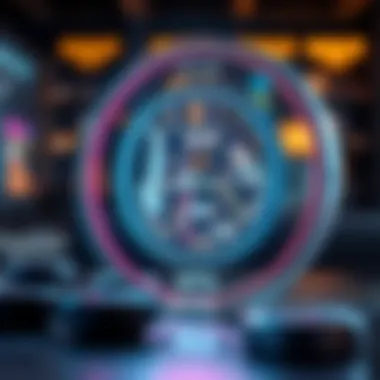

The marketplace for Non-Fungible Tokens (NFTs) is the beating heart of this digital art phenomenon. Without a vibrant marketplace, the potential of these unique digital assets would remain untapped. Artists and collectors must understand the dynamics of buying and selling NFTs as it shapes their experience in this space. Whether one is a seasoned trader or a curious newcomer, navigating the marketplace effectively is key to maximizing both artistic and financial outcomes.
Popular NFT Marketplaces
When it comes to popular NFT marketplaces, a few stand tall amid the landscape. OpenSea, for instance, reigns supreme—it's like the grand bazaar of digital art. On the other hand, Rarible offers a more community-driven approach, allowing artists to have a say in platform governance. Foundation and Nifty Gateway cater to curated drops, highlighting the intersection of exclusivity and desirability.
Each of these platforms has its unique flavor:
- OpenSea: The largest marketplace by volume, offering a mix of art, collectibles, and virtual goods.
- Rarible: A decentralized platform where users can create, buy, and sell NFTs while engaging with a community-focused environment.
- Foundation: Exclusively invites artists to showcase their work, sometimes requiring an invitation from existing members to join.
- Nifty Gateway: Similar to Foundation, it hosts limited edition drops featuring renowned artists, utilizing credit cards for easier access.
These platforms not only provide a space to trade NFTs but also play a crucial role in establishing the perceived value of these assets.
Pricing Strategies for NFTs
Determining how to price an NFT is akin to setting a price at a fine art auction. Many factors come into play—scarcity, artist reputation, and demand can all shape the final sale price. Artists must research and analyze similar works and their price ranges, understanding what collectors may be willing to pay.
A few common strategies include:
- Cost-Plus Pricing: Start by calculating the production costs—software, tools, and time invested—then add a profit margin.
- Market Comparisons: Analyze what similar NFTs in your genre are selling for. Is there a pantheon of artists similar to you achieving higher prices?
- Emotional Pricing: Employ psychological pricing, using figures like $99 instead of $100 to make the purchase feel more appealing.
Keep in mind, the hype surrounding a particular artwork can significantly inflate its value. Timing the market can be tricky, but strategically launching an NFT during a trending moment or event can attract attention and higher bids.
Navigating Auction Dynamics
That leads us to auctions. Participating in auctions can feel like stepping into a social outing filled with excitement and tension. Understanding the dynamics of NFT auctions is essential to securing the pieces you want or fetching the best price for what you sell. Bidding wars can significantly drive up prices, but being caught in the fever of competition can also lead to overspending.
Here are some tips for navigating auctions successfully:
- Research the Auction House: Each auction platform has its own quirks. Familiarize yourself with the rules, so you’re not caught off guard during your first bid.
- Set a Limit: Before you place a bid, know your maximum limit. Once you hit that number, step back. It's easy to get swept up in the moment.
- Watch the Trends: Observe how bids are flowing in real-time. This can give you insight into whether bids tend to increase quickly or slowly over time.
"Understanding the intricacies of the NFT marketplace is tantamount to mastering a new language—being informed is the first step towards fluency."
By grasping the essence of the marketplace—its platforms, pricing strategies, and auction dynamics—artists and collectors can make informed decisions. This knowledge empowers them to navigate the ever-evolving landscape of NFTs with astuteness and confidence.
Valuation and Ownership of NFTs
The valuation and ownership of NFTs is a cornerstone topic that requires careful attention in understanding the NFT landscape. With traditional art, value tends to hinge on aspects like the artist's reputation, historical significance, and market demand. Conversely, NFTs introduce a unique set of mechanisms and considerations that can shift these paradigms.
In the digital realm, an NFT is not merely a digital file; it embodies proof of ownership and authenticity. The ownership encased in a blockchain ensures that each NFT remains distinct, holding its value based on both its uniqueness and the context surrounding it. Thus, comprehending how these factors interplay helps traders, investors, and artists alike in navigating the complex marketplace that NFTs present.
Factors Influencing NFT Value
When it comes to valuation, several elements come into play. First, one must consider the artist’s reputation. Well-known creators often see their work sell for significantly higher prices than new or anonymous artists. Beyond celebrity status, other factors include the
- Rarity: The less available an NFT is, the more value it may command. Limited editions or one-of-a-kind pieces can attract higher bids.
- Utility: Some NFTs offer other functionalities, such as access to exclusive content or services, further enhancing their worth.
- Cultural Relevance: NFTs tied to important cultural milestones or movements can see inflated values based on public interest and social movements.
- Market Demand: As with anything, supply and demand affect value substantially. When interest in a specific category of NFTs spikes, so do prices.
One key takeaway is that the NFT space is dynamic, with values fluctuating as markets react to trends and events—both within and outside the digital art world.
The Concept of Digital Scarcity
Digital scarcity is a major driving force in determining the valuation of NFTs. Unlike physical art, which can be replicated easily, NFTs introduce a mechanism for verifying authenticity through blockchain technology. This creates a form of scarcity, as each token is unique and verifiable.
Scarcity has several implications:
- Collectibility: Much like traditional collectible art pieces, rare NFTs become more sought after.
- Value Appreciation: Scarce items often appreciate in value over time, particularly if the artist gains wider recognition or if the NFT becomes culturally significant.
- Market Speculation: Enthusiasts often speculate on potential future value, driving prices up, which in turn influences actual market prices.
However, it is vital to recognize that with digital scarcity comes a risk. The very uniqueness that enhances value can cause volatility—something investors should keep a wary eye on.
Ownership Rights and Legalities
Ownership of NFTs extends beyond merely possessing a digital image. Buying an NFT doesn't guarantee all rights to the artwork. Typically, the ownership confers a license to display or trade the NFT but may not include reproduction rights or other proprietary rights.
This brings to light several legal considerations:
- Copyright: The original creator retains copyright unless explicitly transferred, meaning collectors may not use the artwork commercially without permission.
- Smart Contracts: Embedded smart contracts define and enforce ownership rights, ensuring compliance and creating a transparent framework for transactions.
- Regulatory Landscape: As the NFT environment evolves, regulations may shape how ownership rights are defined and enforced, further complicating the landscape for buyers and sellers.
"Understanding the nuances of ownership rights is perhaps as essential as grasping the mechanics of buying and selling NFTs."
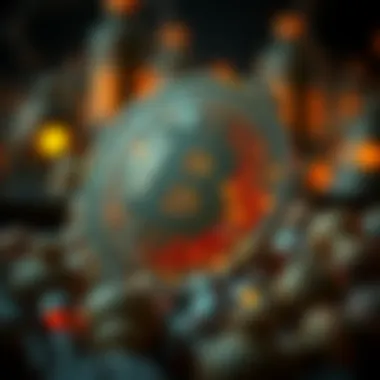

Engaging in the purchase of NFTs carries responsibilities and implications. Collectors must be diligent in reading the provided terms of any NFT transaction, ensuring that both artist and buyer interests are protected.
Impact of NFTs on the Art World
The introduction of Non-Fungible Tokens (NFTs) has materially altered the landscape of the art world, fundamentally reshaping how art is created, sold, and perceived. Artists and collectors alike are still grappling with the implications of this new digital marketplace. At its core, the rise of NFTs has ushered in a fresh paradigm where digital creations can be authenticated, ownership is clearly defined, and artistic value takes on new meanings. This chapter delves into key elements that illustrate the transformative impact of NFTs on traditional and contemporary art practices.
Redefinition of Artistic Valuation
NFTs bring about a radical shift in how we perceive artistic value. Traditionally, the worth of a piece of art was often evaluated based on factors like artist reputation, medium, and historical significance. However, with the advent of digital assets, a new set of parameters has emerged. Artists can now sell their work online without relying on the gallery system, which historically held significant influence over valuation.
In this new framework, scarcity is artificially generated. A piece of digital art might be deemed rare not due to the limitations of physical medium, but because it is minted as a unique NFT. This redefinition highlights the significance of the artist’s personal brand rather than solely the artwork itself. For example, works by artists like Beeple fetch millions not just for their aesthetic appeal but for the value attached to their identity and story behind the creation.
"In the world of NFTs, the artist's narrative intertwines with the art to forge a new kind of value."
Barriers to Entry for Traditional Artists
The shift into the NFT space doesn’t come without its own set of obstacles, particularly for artists accustomed to traditional mediums. Many established artists find themselves hesitant or even resistant to embrace NFTs due to a lack of understanding about blockchain technology and digital marketplaces. The technical know-how required to navigate these platforms can be a steep learning curve.
Furthermore, several traditional artists may perceive NFTs as a dilution of their craft, viewing digital platforms as less legitimate than conventional galleries. The decentralized nature of NFTs poses a challenge to artists who have long relied on gallery representation for credibility. This tension raises questions about authenticity, artistic expression, and whether traditional art forms can coexist with this new digital breed. It's essential that educational resources and support systems emerge to bridge this divide, allowing artists to explore the benefits of NFTs without feeling alienated.
Cultural Shifts in Digital Art Consumption
The adoption of NFTs has also led to significant cultural shifts in how digital art is consumed. Once considered ephemeral and lacking permanence, digital art is now valued for its uniqueness and potential return on investment. Audiences have expanded beyond local galleries to global platforms, allowing artists to reach diverse audiences and engage them in ways previously unimaginable.
Social media plays a pivotal role in this shift. Platforms like Twitter and Instagram facilitate discussions, influencers amplify voices, and marketplaces such as OpenSea and Rarible provide venues for sales. This has birthed a new culture around art consumption where fans become collectors, blurring the line between creator and audience.
In sum, NFTs have transformed artistic valuation, dismantled barriers that traditional artists face, and reshaped the cultural landscape surrounding digital art consumption. As both artists and buyers navigate this evolving terrain, it's important to remain aware of the implications and opportunities that NFTs present in the realm of creativity.
Future Trends in NFTs and Digital Art
The world of Non-Fungible Tokens (NFTs) has transformed the landscape of digital art and its associated marketplace. As we look ahead, understanding the future trends in NFTs is not just about keeping pace with technology; it's about being in tune with the shifting currents of art, commerce, and community. The forthcoming years promise a plethora of new developments, ripe for exploration and application.
Evolution of NFT Technologies
NFT technologies are advancing at a breakneck speed. Recent innovations in blockchain infrastructure facilitate faster and more secure transactions. The speed of blockchain networks has improved tremendously, allowing artists and collectors to trade NFTs with lower gas fees. New consensus mechanisms such as proof of stake are being adopted more widely, leading to energy-efficient solutions that satisfy growing environmental concerns.
Moreover, protocols that allow for interoperability between different blockchains are gaining traction. This means artists can mint their work across multiple platforms, increasing visibility and potential sales channels. These developments make participation in the NFT space more accessible. Artists, traders, and investors must stay informed and agile to effectively navigate this evolving landscape.
Integration with Augmented Reality
When it comes to elevating the digital art experience, augmented reality (AR) is poised to play a crucial role. Imagine viewing a digital painting not just on a screen but through your own living space. Artists are beginning to explore how AR can enhance their NFT art, introducing interactive elements that engage viewers in unprecedented ways.
For instance, a digital sculpture could be experienced in 3D, allowing art enthusiasts to walk around it or even modify it via their devices. Leading platforms like Snapchat and Instagram have already incorporated AR into user experiences, suggesting a mainstream acceptance of this technology. As this trend gains traction, artists who harness AR can potentially create a richer narrative around their work, merging the physical and digital realms seamlessly.
Potential for Environmental Sustainability
Sustainability has become a hot-button issue across industries, and NFTs are not exempt from scrutiny. The environmental impact of blockchain technologies has fostered a call for greener practices. There's an emerging consensus that the future of NFTs must balance creativity with ecological responsibility.
Some blockchain networks are beginning to address this by adopting sustainable practices, such as shifting away from proof of work towards energy-efficient models like proof of stake. Artists and buyers alike are expected to prioritize platforms that demonstrate commitment to reducing carbon footprints.
Ending: The Future of Drawing NFTs
As we wrap up our exploration into the realm of Non-Fungible Tokens, it becomes evident that the future of drawing NFTs is rich with potential and fraught with challenges. This section illuminates why understanding this future is crucial, particularly for artists, investors, and the tech-savvy community engaged in this evolving landscape. The dialogue around NFTs is far from over; instead, it’s just beginning to reveal its complexities and intricacies.
Summarizing Key Insights
In examining the various aspects of NFTs, several key insights emerge:
- Technological Backbone: The underlying blockchain technology continues to be pivotal. Its security and transparency are indispensable for artists seeking to authenticate their works.
- Creative Freedom: NFTs are not just digital assets; they represent a new frontier for creativity. Artists are able to release their work in ways that were unheard of before, exploring dimensions beyond traditional mediums.
- Market Dynamics: Understanding the marketplace—its volatility, trends, and audience engagement—can significantly influence an artist's success.
- Legal Considerations: As the miles of digital space evolve, so do the laws governing copyright and ownership. Artists must navigate this landscape wisely to protect their interests.
Experts believe that these insights can serve as a platform from which emerging artists and tech investors can build their strategies. The fluid nature of NFTs requires constant adaptation and learning.
A Call to Embrace Digital Creativity
The future of drawing NFTs holds tremendous promise, urging everyone involved—artists, buyers, and enthusiasts alike—to embrace innovation. Artists should not view NFTs merely as a fad; rather, they must see them as a new canvas of creativity, ripe for exploration. The digital art space is not as limiting as it once seemed.
Everyone, from seasoned traders to budding artists, should cultivate a mindset of curiosity and experimentation. Drawing NFTs offers an opportunity to redefine one's artistic identity and engage with a global audience that appreciates originality and innovation. As the market evolves, who knows what new forms and expressions will emerge?
"The magic of creation lies in the courage of the artist to venture into the unknown."
Ultimately, as we look towards the horizon of NFTs in digital artistry, it’s crucial to remain open to the new methods and technologies that will inevitably shape this domain. To thrive here, one must not only adapt but also innovate. How you position yourself today could define your role in the art world of tomorrow.
To navigate forward, consider diving into resources like Wikipedia, or platforms such as Reddit for community insights. Following tech advancements discussed in spaces like Facebook may also offer valuable knowledge.
With the artistic community steadily growing in digital realms, it’s clear: the future is yours for the taking, if you're bold enough to reach for it.
